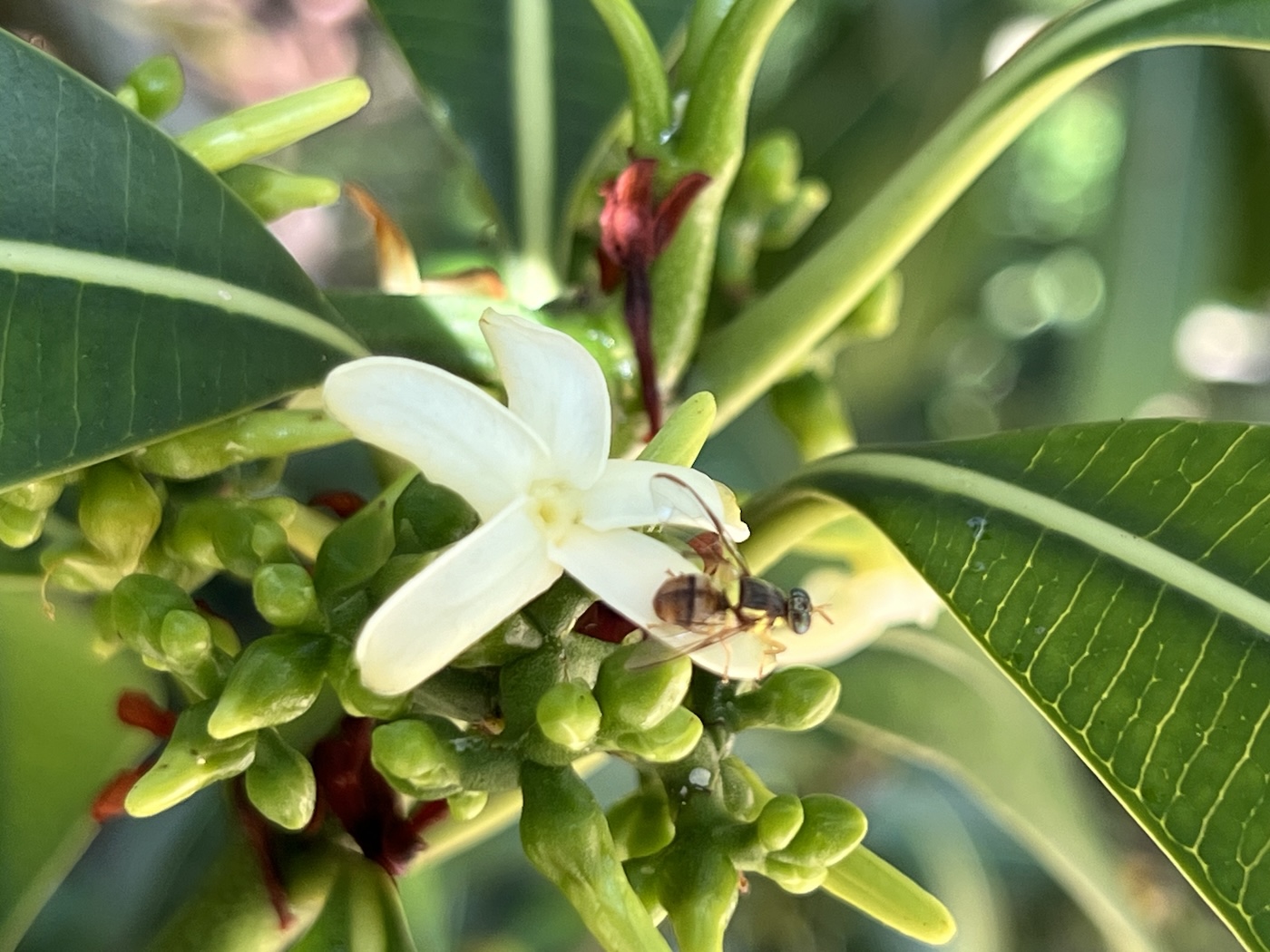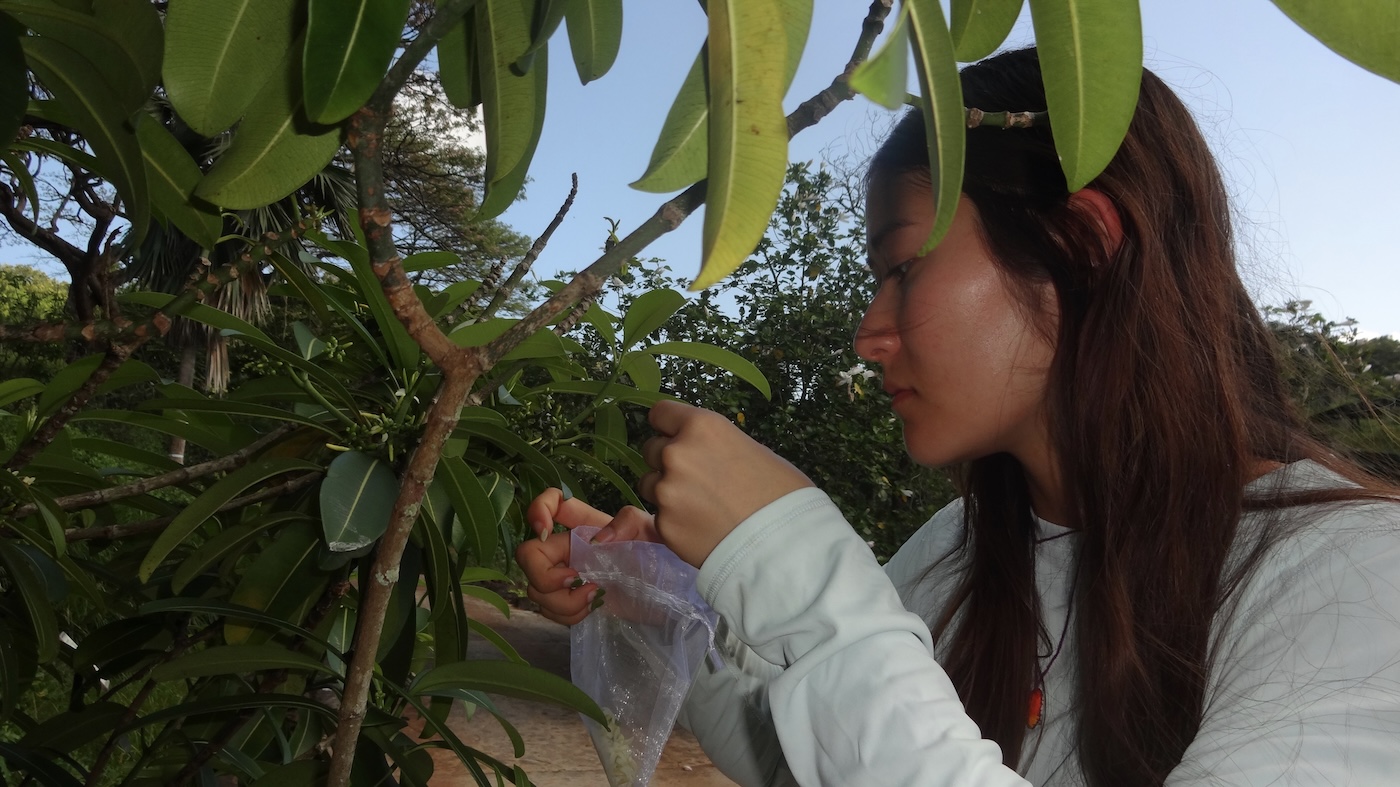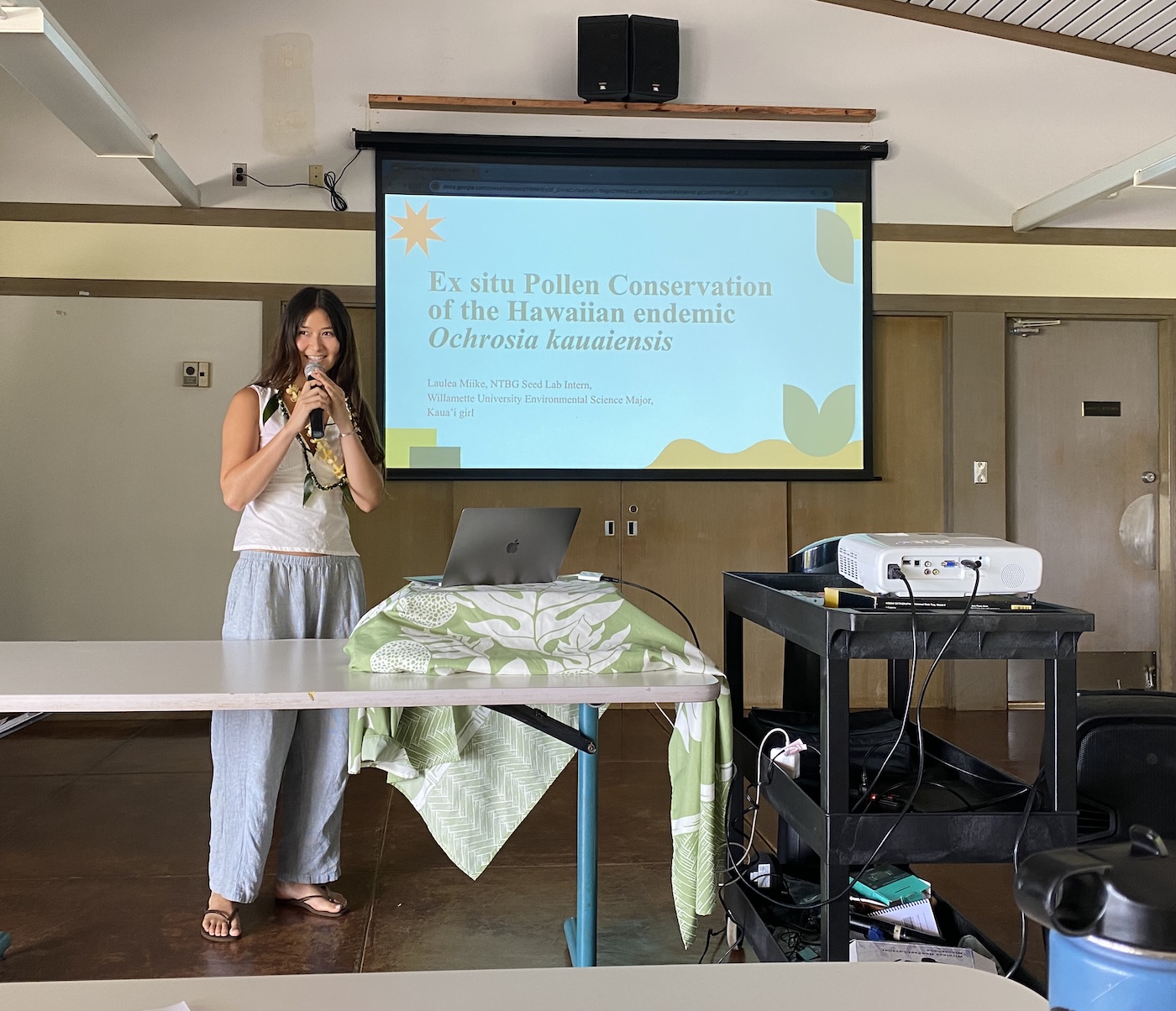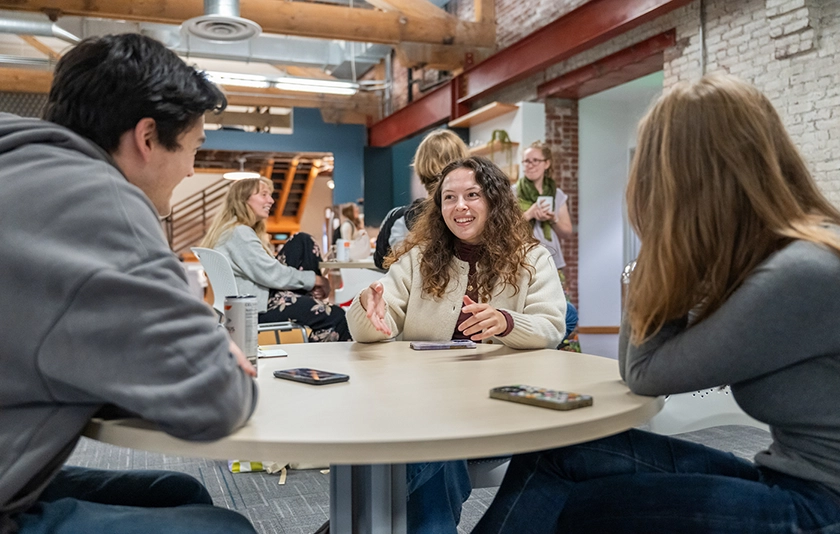Last summer, Environmental Science major Laulea Miike BS’27 returned home to Kaua’i to study pollen germination at Hawai’i’s National Tropical Botanical Garden’s (NTBG) Seed Bank, where scientists are racing against the clock to preserve thousands of species endemic to the islands. Hawai’i’s flora is home to over half of the country’s threatened or endangered species despite only making up 1% of the landmass of the United States. Miike worked to find ways to bank seeds and pollen that scientists have previously struggled to conserve — ensuring the survival of plants that are not found anywhere else in the world.
“This work means so much to me as someone born and raised on Kauaʻi,” she said. “I appreciated that the NTBG works so hard to conserve our island’s native plants and seeds, and I wanted to be a part of the process.”

In response to accelerated rates of plant extinctions due to factors such as climate change, the introduction of invasive species, and clearing land for agriculture, the team at NTBG helps protect and preserve the genetic material of endangered species through the practice of seed and pollen banking. However, little is known about banking the pollen of some wild species, such as Hawaii's endemic hōlei tree, whose pollen conservation physiology was previously unknown. According to the NTBG, only 150 hōlei trees remain.
“I chose to conduct research on this particular species because it is endemic to Kauaʻi — it even has Kauaʻi in its scientific name: Ochrosia kauaiensis,” Miike says. “Very little is known about the pollen conservation of wild species, and hōlei is no exception. Previous research found that its seeds likely cannot be stored by conventional methods, making it a good target species for pollen conservation research. My internship focused on researching germination and storage behavior of the pollen in this species to aid conservation efforts.”
 As she worked through her internship, Miike was supported by many resources at Willamette, including her advisor, Professor of Environmental Science and Dempsey Chair of Environmental Policy & Politics Joe Bowersox. “We checked in every week to help me stay on track with my goals and debrief together,” Miike says. The Office of Career Development also supported Miike with administrative support and internship funding.
As she worked through her internship, Miike was supported by many resources at Willamette, including her advisor, Professor of Environmental Science and Dempsey Chair of Environmental Policy & Politics Joe Bowersox. “We checked in every week to help me stay on track with my goals and debrief together,” Miike says. The Office of Career Development also supported Miike with administrative support and internship funding.

Miike discovered the optimal conditions for preserving this precious species through field research and extensive lab work. At the end of the summer, she presented her results as a special lecture at NTBG.
Miike’s discoveries pave the way for future efforts to preserve pollen, as pollen and seed banking are becoming widespread practices. Next, she will co-author a scientific paper that will be presented at the Australasian Seed Science Conference in Australia.
“My colleagues are continuing the work I started with Ochrosia kauaiensis pollen conservation research to determine if pollen banking is feasible for the species,” Miike said. “We hope our work will make it so the hōlei can be downlisted from its current status as critically endangered.”
With invaluable lessons from her internship and Environmental Science coursework, Miike will be expanding her conservation research to threatened and endangered Hawaiian waterbirds this summer as an intern at the Kilauea Point and Hanalei National Wildlife Refuge on Kaua’i.



